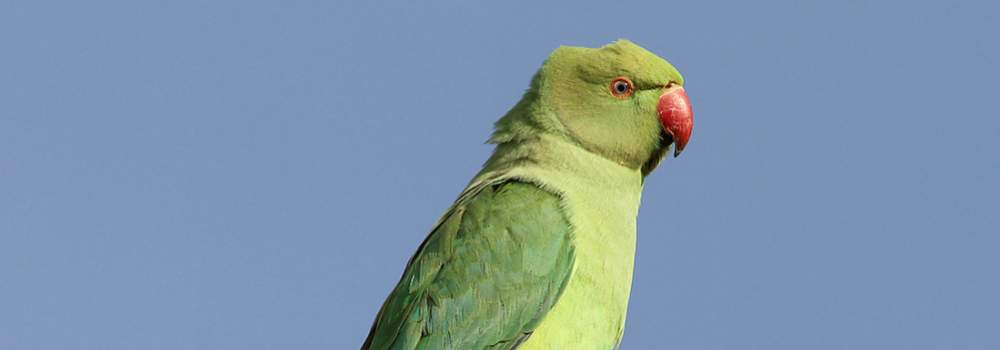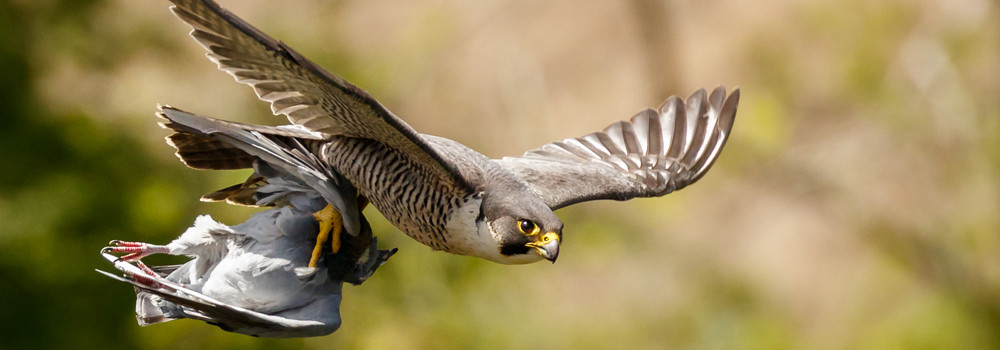Love them or hate them, you can't (or shouldn't) ignore gulls. Build up your gull ID skills by learning to recognise two ideal reference species from this versatile and varied family: Common Gull and Herring Gull.
Friday, 30 March 2018
Monday, 26 March 2018
Wednesday, 21 March 2018
Coastbusting commences
Our North Kent Coastbuster team is now fully active, having undertaken two sessions already.

The purpose of the team is to help tackle the problem we have with the invasive non-native Pacific oyster on Kent's shores. These oysters are out-competing other native species. They grow faster and larger than many of our native species and occupy the same habitat as our native blue mussels. In places where these oysters are left unchecked they can cover entire sites, such as parts of Epple Bay.
 Willie McKnight, a long-time Thanet Coastal Warden and Shoresearcher, first came up with the idea to try to do something about the Pacific oysters. Since 2007 he has worked with a small team of volunteers, and the support of Natural England, round at Ramsgate to tackle the problem there. Over the years, his work has shown that it is possible to control the spread of these oysters. However, the problem round at Ramsgate has meant that his team hasn't been able to tackle sites on the North Kent coast. Thanks to the Heritage Lottery Funding, we now have a team for North Kent.
Willie McKnight, a long-time Thanet Coastal Warden and Shoresearcher, first came up with the idea to try to do something about the Pacific oysters. Since 2007 he has worked with a small team of volunteers, and the support of Natural England, round at Ramsgate to tackle the problem there. Over the years, his work has shown that it is possible to control the spread of these oysters. However, the problem round at Ramsgate has meant that his team hasn't been able to tackle sites on the North Kent coast. Thanks to the Heritage Lottery Funding, we now have a team for North Kent.
There will be a training workshop later this year for anyone interested in becoming a Coastbuster. You need to be fairly fit and able to get to parts of the North Kent coast by 8am weekdays.

The purpose of the team is to help tackle the problem we have with the invasive non-native Pacific oyster on Kent's shores. These oysters are out-competing other native species. They grow faster and larger than many of our native species and occupy the same habitat as our native blue mussels. In places where these oysters are left unchecked they can cover entire sites, such as parts of Epple Bay.
 Willie McKnight, a long-time Thanet Coastal Warden and Shoresearcher, first came up with the idea to try to do something about the Pacific oysters. Since 2007 he has worked with a small team of volunteers, and the support of Natural England, round at Ramsgate to tackle the problem there. Over the years, his work has shown that it is possible to control the spread of these oysters. However, the problem round at Ramsgate has meant that his team hasn't been able to tackle sites on the North Kent coast. Thanks to the Heritage Lottery Funding, we now have a team for North Kent.
Willie McKnight, a long-time Thanet Coastal Warden and Shoresearcher, first came up with the idea to try to do something about the Pacific oysters. Since 2007 he has worked with a small team of volunteers, and the support of Natural England, round at Ramsgate to tackle the problem there. Over the years, his work has shown that it is possible to control the spread of these oysters. However, the problem round at Ramsgate has meant that his team hasn't been able to tackle sites on the North Kent coast. Thanks to the Heritage Lottery Funding, we now have a team for North Kent.There will be a training workshop later this year for anyone interested in becoming a Coastbuster. You need to be fairly fit and able to get to parts of the North Kent coast by 8am weekdays.
Tuesday, 20 March 2018
Sunday, 18 March 2018
Thursday, 15 March 2018
GWCT/BTO Woodcock Survey
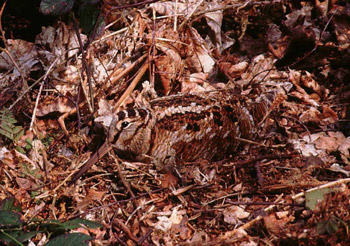
We urgently need to monitor changes in breeding Woodcock numbers, given the recent population decline. Please do consider re-surveying your square or another site in 2018 and help us monitor this declining species. Please register or login using the buttons on the left to request a square or submit your 2018 counts.
Full results have been published for the 2013 breeding Woodcock survey (PDF), which estimated a population of 55,241 males, representing a decline of 29% since 2003. Summary details can be found on the Results page.
Woodcock is the only species of wading bird in Britain and Ireland that is adapted to breed in woodland, both broad-leaved and coniferous. Its plumage is superbly camouflaged to blend in with dead leaf litter and ground vegetation, where it may roost or make its nest; remaining motionless unless approached at very close quarters.
The breeding distribution covers much of Britain and Ireland, however, a considerable reduction in range has been indicated by the 2008-11 Breeding Atlas, since the 1968-72 Breeding Atlas (Sharrock 1976) and a reduction in abundance, as shown by the results of
annual roding counts between 2003 and 2012 (PDF, 390.23 KB)
. In 2015, it was upgraded to Red listed (previously Amber listed) as a bird of conservation concern, due to the decline in breeding numbers and range.
The nocturnal habits and cryptic nature of this species makes it difficult to monitor the breeding population using our traditional survey methods, such as the Breeding Bird Survey (BBS). However, a
special survey method for Woodcock (PDF, 96.91 KB)
has been devised, which uses the counts of the territorial roding flights, undertaken by males at dusk and dawn, to estimate the number of individual males present.
The first
breeding Woodcock Survey was undertaken in 2003 (PDF, 278.53 KB)
estimated a breeding population of 78,000 males in Britain. Thus providing a baseline against which to assess future population change. During winter, it is estimated that up to 1.5 million individuals may be present in Britain and Ireland; mostly originating from northern Europe and western Russia.
The results of the annual breeding season counts run by BTO and GWCT, will be crucial for monitoring future changes to the breeding population.
Does climate change bring us invasive species?
Currently non-native species are being introduced to countries at an unprecedented rate. These species can have severe detrimental effects on native biodiversity, human health and the economy. Due to population growth, increases in trade and tourism and global warming the likelihood of non-native species arriving and establishing in the UK will be higher in the future. A new study by BTO investigates whether it is possible to predict which non-native species are likely to establish in the UK based on the climate in their native range, thereby enabling early preventative action to be taken.
Invasive species can have serious effects in their new home turf; they can be economically expensive, potentially cause health hazards, and they can have a large impact on the native biodiversity. Predicting whether invasive species are likely to colonise the UK is therefore an important priority. This study compared the suitability of the climate in the UK against the native range of 167 potentially invasive, or already established non-native bird species to see which species would be able to expand their range into the UK.
Climate parameters that were used included temperature, precipitation and moisture. Values were used for both the current climate and the projected future climate. Results predicted that in the future, the UK climate will be suitable for more non-native species. Currently the UK climate was deemed suitable for 69 out of the 167 species included, but only 44 of those species actually currently occur in the UK. The results also showed that 85% of species that have colonised the UK successfully were found in climatically unsuitable areas. Many of these were usually found in areas that were wetter than their native range.
In conclusion, there was no overall support that climate suitability is a reliable predictor of non-native bird species’ ranges, as there are many other contributing factors. Non-native populations are highly dependent on when and where introductions take place. Additionally, local availability of resources and competition with native flora and fauna may prevent establishment. Similarly, some birds which may not be climatically suited to the UK may be able to evolve rapidly to adjust to a different climate, or human influence (such as feeding) may provide them with the resources they need to survive. Regular surveying will be necessary to determine the effect climate change has on bird populations, and on where they may go in future.
Heronries Census
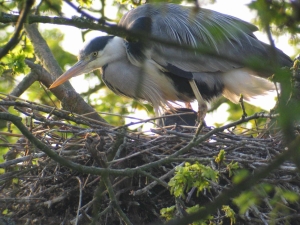
The BTO Heronries Census collects counts of 'apparently
occupied nests' of waterbirds from heronries throughout the UK.
Find a Heronries siteto participate in the censusoccupied nests' of waterbirds from heronries throughout the UK.
Population changes for most of the UK's common breeding birds are monitored through transect counts for the Breeding Bird Survey. Colonial species are covered relatively poorly by BBS, however, because breeding is concentrated into such small areas.
Heronries are the places where Grey Herons, Little Egrets and sometimes other waterbirds gather to nest. Nesting often persists for many decades at the same location and becomes very well known to birdwatchers. Grey Herons in particular are monitored efficiently and accurately by counting 'apparently occupied nests' in their heronries.
The BTO's Heronries Census has gathered nest counts annually since 1928 at an increasing proportion of the UK's heronries. We aim to count as many heronries as possible each year and to ensure that newly established sites are quickly discovered and brought into the programme of annual counts.
The main species covered is Grey Heron but Little Egret is fully included, as are rarer species of colonial waterbirds such as Cattle Egrets (which nested in the UK for the first time in 2008). Nest counts of Cormorants are also collected, especially where they are nesting alongside herons. Data are shared with county recorders and for rare species with the Rare Breeding Birds Panel.
The long history of the Heronries Census has been interspersed with periodic Heronries Surveys which have expanded upon its coverage in particular years. Heronries Surveys (of varying aims and scope) were undertaken in 1928, 1954, 1964, 1985 and 2003. The count data from all these surveys are integrated fully with the Heronries Census database. We are undertaking another Heronries Survey in 2018.
How to take part
You can view our vacant site map for heronries to see if there are any known vacant heronries in your area and contact the Regional Organiser to express an interest in the survey. We may not know about all heronries, so if you find a colony of nesting Grey Herons or other waterbirds and suspect it may not be known to the Heronries Census, please report it to us using the vacant site map. You can also contact us to make a general enquiry at herons@bto.org.
Once you have contacted the Regional Organiser (RO) and agree to cover a colony, they will be able to allocate it to you so that you can input, view and edit your Heronries Census data online. Read more information on taking part. Note that if you are not yet registered for BTO online surveys you will need to register before the RO can allocate a heronries site to you.
Breeding Peregrines on the up thanks to growth of lowland populations
The return of breeding Peregrines to former haunts, and the colonisation of urban sites such as industrial buildings and cathedrals, has not gone unnoticed by birdwatchers. It is only now, however, with the publication of the results from the latest national Peregrine survey, that we can put figures on the changing fortunes of this stunning bird of prey.
The Peregrine breeding population in the UK and Isle of Man has been surveyed at intervals of 10 years since 1961/62. The first four surveys documented the recovery of the Peregrine population from the ‘crash’ of the 1960s (when numbers fell to less than half of the pre-war population) to the highest levels since recording began. The new national survey, carried out in 2014, sought to secure a new national population estimate and, in particular, to improve our knowledge of the species in lowland areas not traditionally regarded as being part of the Peregrine’s breeding range.
The 2014 survey, co-ordinated by the BTO in partnership with many other raptor monitoring individuals and organisations, was made possible by the hard work of hundreds of volunteers. These fieldworkers surveyed a combination of known sites and randomly selected survey squares to secure evidence of occupation and breeding by Peregrines. The population estimate derived from the survey puts the UK Peregrine population at 1,769 breeding pairs, an increase of 22% on the previous survey (carried out in 2002).
Most of the increase is accounted for by population growth in lowland England, with breeding Peregrines continuing to occupy new sites. Most of the inland breeding pairs utilise large cliffs, smaller crags or quarries, but an increasing proportion of pairs occupy man-made structures such as buildings, bridges, pylons and communication masks.
Examination of the regional results reveals contrasting fortunes in Scotland, where there the population has declined overall. Worryingly, Peregrine populations are not doing well in the upland SPAs (Special Protection Areas) established to protect them, a pattern evident in both Scotland and northern England. Further losses of Peregrines from such areas might not pose a grave threat to the UK population, but could be important at a regional level. Possible factors associated with the poor performance of upland Peregrine populations may include prey abundance and availability, and illegal killing associated particularly with management of upland gamebirds for shooting, but also with recreational breeding and racing of domestic pigeons. Other factors may have affected Peregrine numbers at a local level; these include avoidance of Golden Eagles, oiling by Fulmars and exposure to a wide range of environmental pollutants.
The findings of this survey provide an opportunity to investigate the effects of these and other issues, with complementary data sets – such as Bird Atlas 2007-11 or the RSPB’s data on upland land use – potentially of great value here.
Reducing the risk of disease at garden feeders
Feed the birds? Scientists highlight risks of disease at garden bird feeders

Wild birds are at risk of a number of serious diseases at our garden bird feeders, according to a collaborative study led by scientists from international conservation charity ZSL (Zoological Society of London) and published in the journal Philosophical Transactions of the Royal Society B.
The study found that while there are multiple benefits of additional food resources for wild birds, particularly during the harsher winter months, garden feeding can also promote the transmission of some diseases – not least by encouraging birds to repeatedly congregate in the same location, often bringing them into regular contact with other species they wouldn’t otherwise interact with so closely in the wider environment. Risks can be increased if hygiene at feeding stations is poor, allowing stale food, food waste and droppings to accumulate.
The research, conducted in partnership with the British Trust for Ornithology (BTO) and Fera Science Ltd, analysed more than 25 years’ worth of data on the occurrence of wild bird health threats, focusing on protozoal (finch trichomonosis), viral (Paridae pox) and bacterial (passerine salmonellosis) diseases. Members of the public contributed their observations via national ‘citizen science’ projects, highlighting the ongoing importance of these surveys in helping scientists track the evolving health threats facing garden wildlife.
Commenting on the study, lead author Dr Becki Lawson from ZSL’s Institute of Zoology said: “Our study shows how three of the most common diseases that affect British garden birds have changed both dramatically and unpredictably over the past decade, both in terms of the species they affect and their patterns of occurrence.
“Both finch trichomonosis and Paridae pox have emerged recently, causing disease epidemics affecting large numbers of birds, while passerine salmonellosis – previously a common condition – appears to have reduced to a very low level. These conditions have different means of transmission – so deepening our understanding of disease dynamics will help us develop best practice advice to ensure that feeding garden birds also helps to safeguard their health”.
The study makes a number of evidence-based recommendations to maximise the benefits but minimise the potential risks associated with feeding wild birds. When disease outbreaks do occur, people are encouraged to report their observations (e.g. lethargy or unusually fluffed-up plumage) to the Garden Wildlife Health (GWH) project; seek veterinary guidance; and consider a temporary halt to garden feeding in order to encourage birds to disperse, reducing the risk of further disease spread.
Commenting further, co-author Kate Risely, BTO Garden BirdWatch Organiser said: “We’re calling on everyone who feeds wild birds to be aware of their responsibilities for preventing disease. Simple steps we’d recommend include offering a variety of food from accredited sources; feeding in moderation, so that feeders are typically emptied every 1-2 days; the regular cleaning of bird feeders; and rotation of feeding sites to avoid accumulation of waste food or bird droppings.
Anyone can join the battle against wildlife disease by contributing vital data to the nationwide Garden Wildlife Health project, a collaboration between ZSL, BTO, Froglife and the Royal Society for the Protection of Birds (RSPB). Find out more, including further best-practice advice for minimising disease risks, and reporting sick garden wildlife, via this link:www.gardenwildlifehealth.org.
Saturday, 10 March 2018
Private conservation deal barely helps US woodpeckers
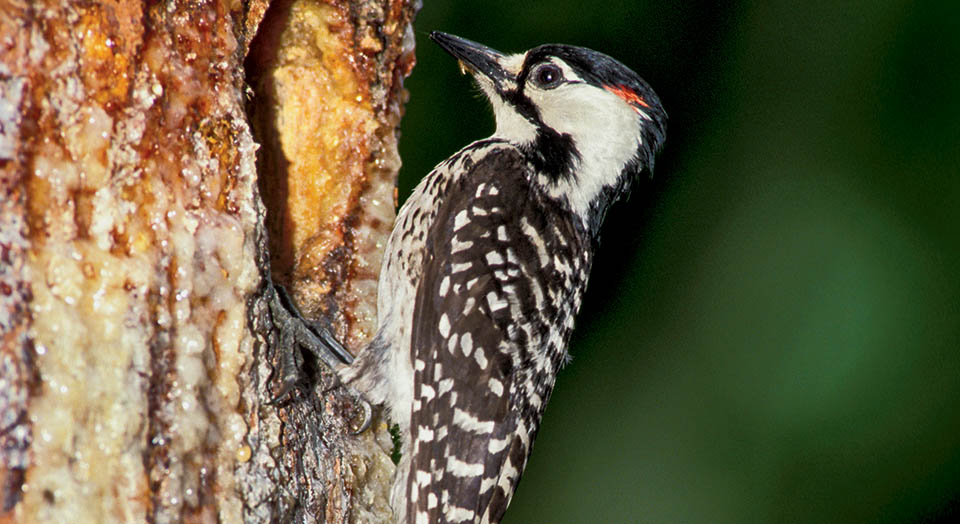
The breeding success of Red-cockaded Woodpecker has been sustained, but not improved, by an agreement between landowners in North Carolina and the US Fish and Wildlife Service.
The US Fish and Wildlife Service started the Safe Harbor programme iin 1995 to reduce conflict between private landowners and conservation officials, and to encourage those landowners to take steps to benefit endangered Red-cockaded Woodpeckers on their land. The project has successfully cut conflict over conservation and reduced the abandonment of nest clusters, but an official study and assessment have shown that, while the scheme may have raised landowners’ awareness of and tolerance for their feathered neighbours, it has largely failed to improve breeding success of birds on their land.
Virginia Polytechnic Institute and State University’s Jennifer Smith and her colleagues compared the breeding success of Red-cockaded Woodpeckers on Safe Harbor properties before and after enrolment on the programme with that on control properties, monitoring a total of 55 breeding clusters in the North Carolina Sandhills between 1980 and 2014.
Nest cluster abandonment increased on control properties while remaining constant and negligible on Safe Harbor properties, but other measures of breeding success such as clutch size, nest-failure rates and fledging success were unaffected by Safe Harbor habitat management efforts. These results suggest that the programme often failed to maintain or increase high-quality foraging habitat for the birds.
Regular fires are essential for maintaining suitable Red-cockaded Woodpecker habitat, and planned burns are not feasible on a large proportion of Safe Harbor properties in the Sandhills due to their proximity to residential areas. In addition, the researchers believe that inadequate funding may have limited the project’s impact. However, they believe the programme and the monitoring efforts that have accompanied it still have value.
“The longevity of the research project combined with the initiation of Safe Harbor has had marked benefits because it has allowed us to build relationships with private landowners,” said Kerry Brust, co-author of the paper. “Exchanges with private landowners have presented an ideal opportunity to draw attention to the listed species and the management needed for the persistence of Red-cockaded Woodpeckers.”
“This study identifies the great value that Safe Harbor has brought to Red-cockaded Woodpecker conservation but also highlights important and daunting limitations of the programme,” agreed US Forest Service biologist John Kilgo, who works on Red-cockaded Woodpecker conservation. “As these are primarily related to the funding constraints and less stringent habitat management requirements under the programme, new and creative approaches will be required if the effectiveness of Safe Harbor is to be improved.”
Tierra del Fuego's Red Knot population crashes to a new low
Aerial surveys of the Red Knot population wintering in Tierra del Fuego, South America, revealed a total of 9,840 birds, representing a new low since surveys began.
The previous low was a count of 9,850 birds in 2011, while this year's figure also represents a 25 per cent decrease on the number recorded in January 2017 (13,127).
While the population has not shown any signs of a sustained recovery in recent years, a 15 per cent increase in the total counted between 2016 and 2017 had been a promising sign. Unfortunately, it seems likely that poor northbound feeding conditions in Delaware Bay, USA, in May 2017 resulted in a lower survival rate, with the result that the population crashed. For context, there were 50,000 Red Knot in Tierre del Fuego as recently as the year 2000.
In 2018, nearly all the Red Knot counted were found in Bahía Lomas, Chile. Bahía Lomas became a Western Hemisphere Shorebird Reserve Network (WHSRN) site of Hemispheric Importance in 2009, primarily for its unparalleled importance for the New World rufa subspecies of Red Knot. Virtually all (98.7 per cent) of the birds counted in the 2018 survey occurred in Tierra del Fuego, which has been the case since 2011. At the other major historical wintering area at Río Grande, Argentina, the count improved slightly from the all-time low of 27 in 2017, with 130 birds recorded. As recently as 2008, counts at Río Grande were in the range of 3,500 to 5,000, but have fallen drastically since then. No Red Knot were recorded in Bahía San Sebastian amongst the much larger numbers of Hudsonian Godwits. The concentration of nearly all Red Knot in one location (Bahía Lomas) in one major flock makes them particularly vulnerable to any environmental problems that might occur locally.
Delaware Bay plays a key role in the annual cycle of Red Knot, as it is the last stop-over on northward spring migration before the flight to Arctic breeding grounds. It is here that the birds must acquire sufficient body reserves not only for the flight to the Arctic, but also to enable them to breed successfully once they arrive. Knots departing Delaware Bay in sub-optimal condition suffer lower survival, as shown by research in the early 2000s when the major food resource of Horseshoe Crab eggs were severely depleted; many birds could not reach adequate departure weights, resulting in reduced survival and the rapid population crash observed in those years. In May 2017, low-water temperatures in Delaware Bay caused a delay in Horseshoe Crabs coming ashore to lay their eggs, in turn lowering availability of their eggs to migrating shorebirds. As a result, many knots departed Delaware Bay at lower than optimal weight levels, similar to those of the early 2000s when the population also crashed.
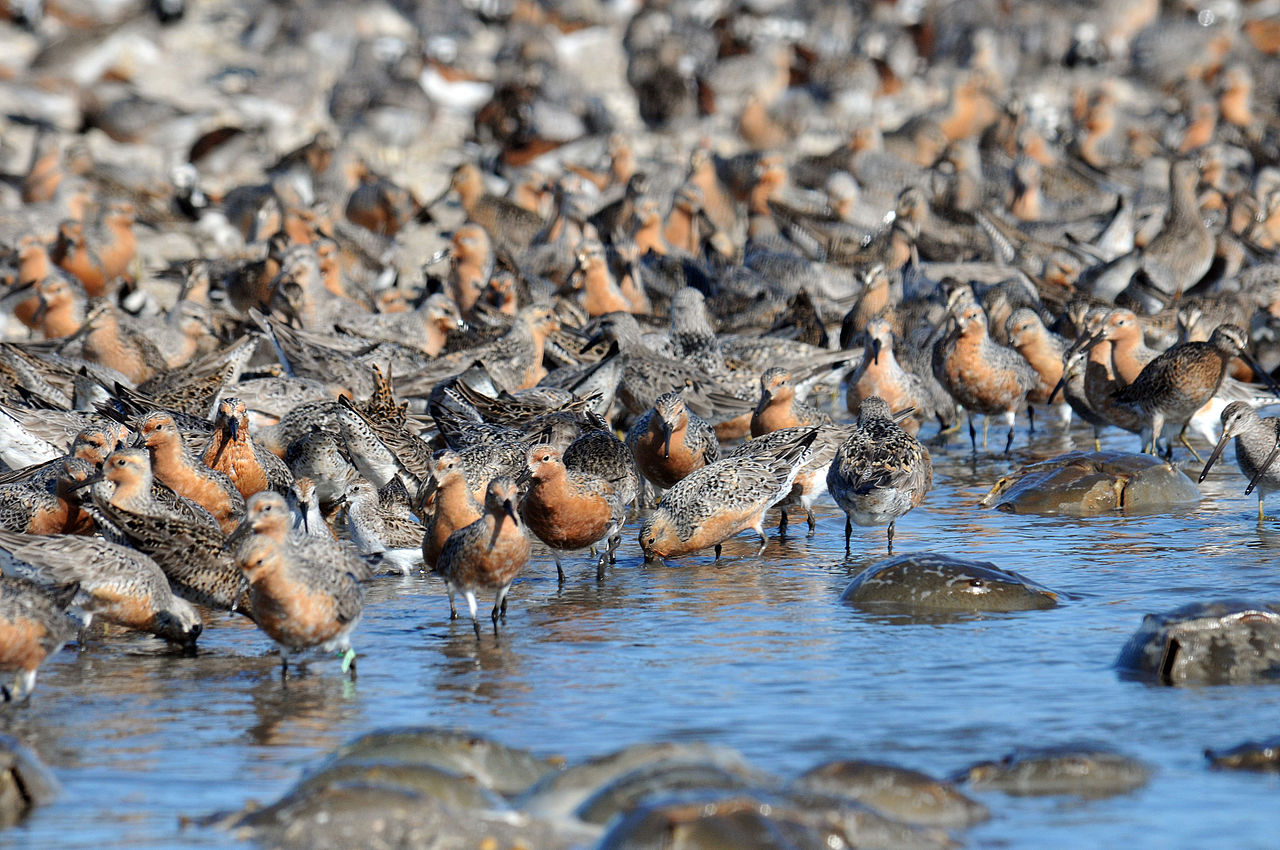
Hundreds of Red Knot feeding frantacially at Mispillion Harbor, Delaware, USA, in May 2009 (Gregory Breese/USFWS).
Bahía Lomas and Bahía San Sebastian (Argentina) are also both major wintering areas for Hudsonian Godwit. Numbers of godwits in both Bahía San Sebastian (19,800) and Bahía Lomas (15,750) were higher than in 2017, a combined total of 35,550 compared with 24,900 the previous year. However, totals of godwits have varied between about 24,000 and 40,000 from 2011 to 2018, and worryingly these totals are lower than those in the early 2000s, suggesting a steady decrease since 2002.
RSPB asks public to increase bird feeding
The harsh effects of 'The Beast from the East' and 'Storm Emma' are driving desperate wild birds into gardens in search of food. Across the country, large numbers of Fieldfares and Redwings are turning up on people's lawns as the temperature plummets, and the RSPB has urged the public to put out extra food for them.These two 'winter thrushes' usually spend the winter roaming the British countryside in search of berries and other fruit. However, at this point in winter, this natural food supply has dwindled to a minimum. With the weather having made a dramatic turn for the worse across much of the UK, these hungry birds have moved into gardens for food, water and shelter.
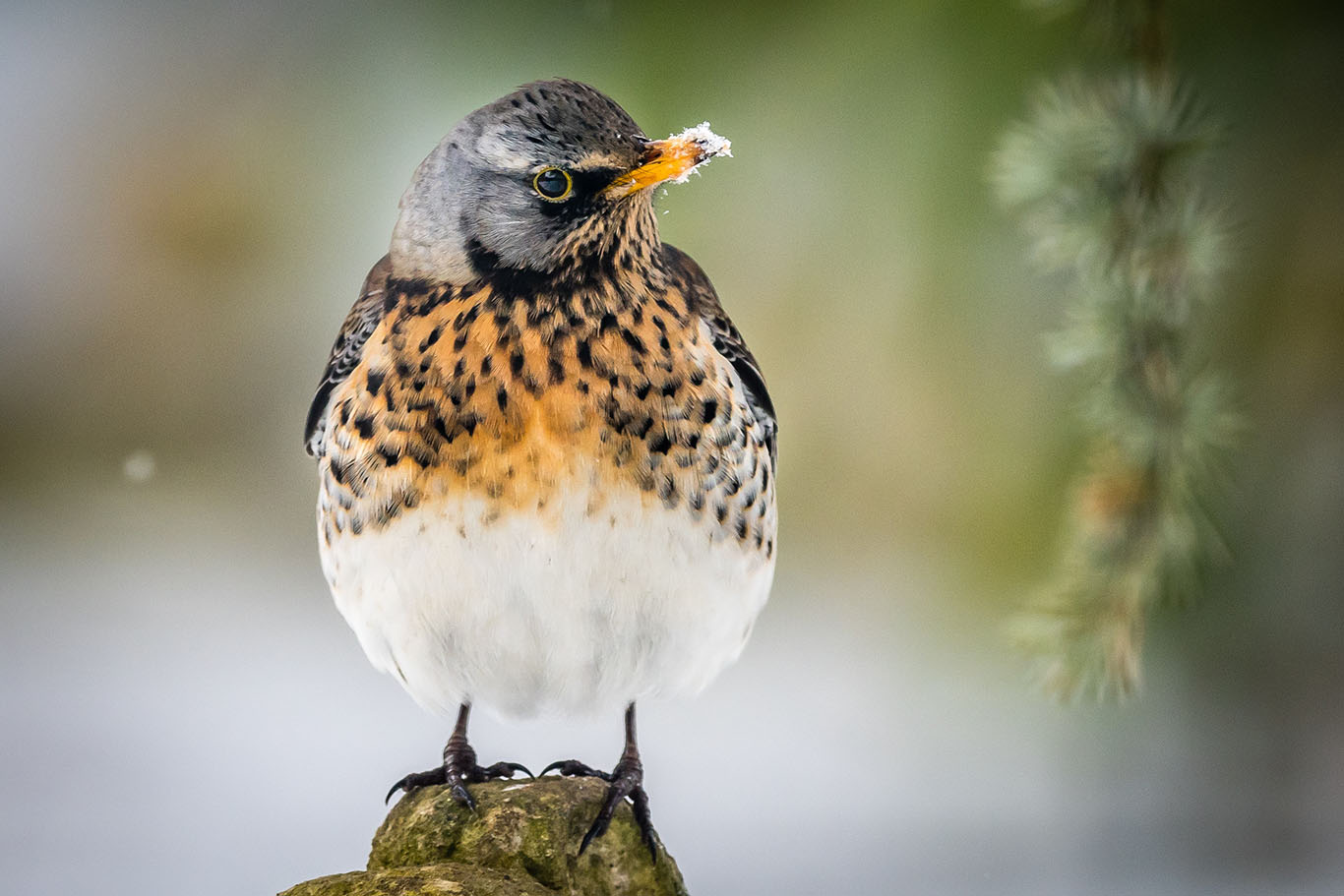
The cold weather has seen huge numbers of Fieldfares move into urban and suburban gardens as they look for food (Anthony Morris).
RSPB's Jamie Wyver commented: "We are getting a lot of phone calls and social media messages from people reporting Fieldfares and Redwings in their gardens. It’s quite unusual to see this and it shows the harsh weather conditions are really affecting them. You can help these beautiful visitors get through this cold snap by putting out fruit like apples and pears, crumbled cheese or suet, and mealworms. Remember they’ll need water too, so keep your bird bath topped up and ice free."
Redwings and Fieldfares will remain in the UK until around the end of March when they return to Iceland and Scandinavia to nest.
For more tips and activities on how to help birds and wildlife in your garden all year round visit: www.rspb.org.uk/homes
Sunday, 4 March 2018
Thursday, 1 March 2018
Scaling Up Pangolin Conservation Like Never Before
In celebration of World Pangolin Day, Dan Challender, IUCN Programme Officer for Sustainable Use and Trade of Wildlife and Chair of the IUCN Species Survival Commission Pangolin Specialist Group discusses pangolin conservation and the achievements in conservation of this species over the past year.
Saturday 17th February 2018 is World Pangolin Day and the 6th birthday of the IUCN SSC Pangolin Specialist Group, also known as the Pangolin SG. World Pangolin Day provides a perfect opportunity to celebrate pangolins for the fascinating and intriguing creatures that they are, and to reflect on some of our key accomplishments these past six years.
Let us first celebrate pangolins! I became captivated by pangolins because they are the most unique and enchanting animals I could ever wish to see. Not only do they look prehistoric and like they belong in the Jurassic period (they have been likened to dinosaurs!) but the global conservation community knows very little about them and many mysteries about pangolins remain. For instance, we are still learning how long they live in the wild, and we’ve only just discovered through recent research in the Central African Republic that the black-bellied pangolin (Phataginus tetradactyla), thought to be fully nocturnal, is actually active diurnally (in the daytime). With so much still to learn about the animals, they epitomise the wonder of the natural world, and pangolin researchers today are entitled to feel like Darwin or Wallace as they seek to reveal so much about them that remains unknown.
 Such knowledge is essential to informing conservation actions for pangolins – and they really need it! Based on best available knowledge, all pangolins are considered threatened with extinction on The IUCN Red List of Threatened Species™, where they are categorised as Critically Endangered, Endangered or Vulnerable. Their imperilled status is due to overexploitation from both poaching for consumption of the animals and their body parts (e.g., scales) locally and from trafficking of pangolins and their scales internationally, mainly to satisfy the unyielding demand of China and Vietnam’s luxury meat and traditional medicine markets. There pangolin meat is eaten as a luxury dish in high end urban restaurants and scales are used to treat a range of ailments from psoriasis to cancer. While pangolin trafficking has historically been confined to Asia, the most worrying trend in the last decade has been the emergence of intercontinental trafficking in African pangolin scales to Asia, which now takes place at a huge volume, to the tune of tens of tonnes (translating to tens of thousands of pangolins) per year, and now affects all eight pangolin species.
Such knowledge is essential to informing conservation actions for pangolins – and they really need it! Based on best available knowledge, all pangolins are considered threatened with extinction on The IUCN Red List of Threatened Species™, where they are categorised as Critically Endangered, Endangered or Vulnerable. Their imperilled status is due to overexploitation from both poaching for consumption of the animals and their body parts (e.g., scales) locally and from trafficking of pangolins and their scales internationally, mainly to satisfy the unyielding demand of China and Vietnam’s luxury meat and traditional medicine markets. There pangolin meat is eaten as a luxury dish in high end urban restaurants and scales are used to treat a range of ailments from psoriasis to cancer. While pangolin trafficking has historically been confined to Asia, the most worrying trend in the last decade has been the emergence of intercontinental trafficking in African pangolin scales to Asia, which now takes place at a huge volume, to the tune of tens of tonnes (translating to tens of thousands of pangolins) per year, and now affects all eight pangolin species.
But there is cause for hope. There is an ever-strengthening conservation response to the trafficking crisis and the Pangolin SG has made important progress in our first six years. We now have over 100 members from 35 countries, and as the profile of pangolins grows we are responding to increasing interest from civil society, governments and NGOs. We have taken the best available knowledge and applied it to assessing the conservation status and extinction risk for pangolins on The IUCN Red List of Threatened Species™. Numerous large field conservation projects have launched which focus on pangolins, including Fondation Segré Pangolin Conservation Initiative I and II, among others. In 2013 the Pangolin SG gathered experts from across the globe to develop the first ever global conservation action plan for pangolins to guide conservation investment, ‘Scaling Up Pangolin Conservation’, and soon after contributed expertise to the First Pangolin Range States Meeting, co-hosted by the governments of Vietnam and the United States in 2015. Importantly, we continue to provide scientific and technical expertise to the Convention on the International Trade in Endangered Species of Wild Fauna and Flora (CITES). The CITES Parties decided in 2016 with nearly universal agreement at their 17th meeting of the Conference of the Parties (CoP17) to afford pangolins the highest level of international protection by up-listing them to Appendix I of the Convention. This means that international trade in pangolins for primarily commercial purposes is now prohibited and the Pangolin SG is developing tools to help support its implementation.
 In the coming years our important work will continue. We are once again assessing the status of the eight pangolin species for The IUCN Red List of Threatened Species™, and will continue to do so periodically in order to make sure the best and most current information possible is available to governments and stakeholders. As the profile of pangolins has grown dramatically in recent years and with it an increase in support for pangolin conservation, the need for detailed regional and national conservation strategies is paramount. Following IUCN’s best practice guidance on species conservation planning, the Pangolin SG will continue our work with partners to develop conservation strategies for the eight pangolin species and help ensure they are implemented. We met with experts and range state government representatives in 2017 to develop a regional strategy for the Sunda pangolin, and are supporting the development of national strategies for pangolins in Taiwan, Singapore and the Philippines, and that’s just the beginning.
In the coming years our important work will continue. We are once again assessing the status of the eight pangolin species for The IUCN Red List of Threatened Species™, and will continue to do so periodically in order to make sure the best and most current information possible is available to governments and stakeholders. As the profile of pangolins has grown dramatically in recent years and with it an increase in support for pangolin conservation, the need for detailed regional and national conservation strategies is paramount. Following IUCN’s best practice guidance on species conservation planning, the Pangolin SG will continue our work with partners to develop conservation strategies for the eight pangolin species and help ensure they are implemented. We met with experts and range state government representatives in 2017 to develop a regional strategy for the Sunda pangolin, and are supporting the development of national strategies for pangolins in Taiwan, Singapore and the Philippines, and that’s just the beginning.
You can be a part of our work to celebrate and conserve pangolins on World Pangolin Day and every day. Whether you are lucky enough to see a pangolin anytime soon, or are celebrating the species by building a snow pangolin, playing pangolin party games or having a bake sale to raise conservation funds, take time to celebrate these fascinating animals with us, and be sure to join us on social media (@PangolinSG) throughout the year.
Brazil on the verge of changing marine conservation history in the South Atlantic
Brazil is on the verge of changing marine conservation history in the South Atlantic. After lagging behind other developing countries in Marine Protected Area coverage, with only 1.5% of its jurisdictional waters under some sort of protection, the Brazilian government has opened public comments on proposals to establish a mosaic of MPAs around the oceanic archipelagos of St. Peter & St. Paul Rocks and Trindade & Martin Vaz, covering approximately 900,000 square kilometres and making Brazil´s MPA coverage jump to some 21% of its Exclusive Economic Zone (EEZ).
Both archipelagos are biodiversity hotspots and their surrounding waters harbour many endemic, vulnerable and endangered species, including whales, sharks, sea turtles and many pelagic species severely depleted by industrial overfishing.
The mosaic includes proposals for two core no-take areas of approximately 109,000 km² of Natural Monuments, strictly no-take areas where fishing, mining and any extractive activity would be totally prohibited, whereas in the surrounding multiple-use zones fishing would be strictly regulated. A coalition of Brazilian environmental NGOs and Tourism sector stakeholders, however, is pushing for the no-take zones to be greatly expanded.
Brazil has made numerous commitments to protect marine biodiversity to date, including with the Promise of Sydney, the 2017 Ocean Conference, and the UN Sustainable Development Goal 14. The proposals for the new large mosaics of protected areas are also related to (and will strongly need) the Brazilian Blue Initiative.
The President of Brazil, Michel Temer, is expected to make a decision in early March, after the public consultation period ends. Any organisation or individual interested in submitting expressions of support for these MPAs can do so by writing to Consulta Publica, Gabinete Pessoal, Ministro Defesa, as well as to assistcm@marinha.mil.br and gm@mma.gov.br, emphasizing that the expansion of Integral Protection no-take MPAS is most welcome and necessary to safeguard marine biodiversity.
At the IUCN World Parks Congress 2014, as part of the Promise of Sydney, Brazil committed to:
- 1. Bringing the biodiversity protection from 1.5% to 5% (equivalent to 175,000 km² of the Brazilian marine territory as protected areas);
- 2. Bringing under enhanced biodiversity protection at least 9,300 km² of marine and coastal areas (with regulated sustainable use practices); and
- 3. Identifying, designing, and preparing for implementation at least two financial mechanisms able to contribute to the long-term sustainability of MCPAs.
The result would be:
- Expansion of protected area coverage of Brazilian coast, territorial sea and Economic Exclusive Zone to 5%;
- Safeguarding sensitive and unique habitats off the South American Atlantic coast;
- Development and deployment of a system-wide biodiversity monitoring system for all Marine Protected Areas;
- Incorporating PA management with natural resource extraction agents (especially oil and gas) and the Brazilian Navy – sharing responsibilities and scaling up the conservation results of this potential partnership;
- Revisiting and updating the biodiversity priority conservation areas map for coastal and marine ecosystems;
- Improving fisheries and other natural resource extraction regulations on coastal and marine ecosystems.
New research reveals a global rise in emerging invasive alien species
IUCN SSC Invasive Species Specialist Group (ISSG) has contributed to research published today in the journal ‘Proceedings of the National Academy of Sciences’, which highlights the urgent need for governments to develop measures to control the spread of emerging alien species.
Up to 16% of all animal and plant species have the potential to become invasive alien species (IAS), according to the new report. “These results suggest that there remains a high proportion of emerging alien species we have yet to encounter, with future impacts that are difficult to predict,” says Dr Hanno Seebens of the Senckenberg Biodiversity and Climate Research Centre and Lead author of the report.
For the study, researchers investigated the emergence of alien species worldwide over time by analysing a number of datasets including the IUCN Global Invasive Species Database (GISD) and the IUCN co-developed Global Register of Introduced and Invasive Species (GRIIS). These datasets provided approximately 46,000 first recorded sightings of established alien species, spanning the past five centuries – the period during which humans increasingly developed passages for species to travel across the globe.
“Between 2000 and 2005, one in four alien species introductions had never been recorded as alien before. These emerging alien species pose a significant challenge to biosecurity measures as it is difficult to predict how they will arrive, and where from,” comments Dr Seebens. “Current biosecurity approaches often rely on knowledge of already known invasive alien species, but this study highlights that early detection and eradication measures will be more important than ever before.”
 Over the past two centuries, humans have been responsible for the introduction of thousands of plant, animal and fungi species to regions outside of their native range. Traditionally, species have been introduced to new areas through the transport of commodities, however the study found that new trade networks and environmental change are contributing to the increasing number of introductions of alien species.
Over the past two centuries, humans have been responsible for the introduction of thousands of plant, animal and fungi species to regions outside of their native range. Traditionally, species have been introduced to new areas through the transport of commodities, however the study found that new trade networks and environmental change are contributing to the increasing number of introductions of alien species.
Some of these introduced species have become invasive, and have had significant impacts on human health, economies and ecosystems. The Asian hornet (Vespa velutina), introduced to western Europe in 2004, preys on other species of insect, particularly honey bees. This has led to major losses in honey bee colonies, decreasing beekeeping production and therefore impacting local economies. The species is also a threat to public health and incidences of anaphylactic shock due to people being stung have been reported. The full impact of the species invasion is as yet unknown.
“Ignoring emerging alien species may lead to direct socio-economic and environmental consequences. The IUCN SSC Invasive Species Specialist Group are working with scientists and policy makers across the globe in an attempt to increase the knowledge base on alien species, and build capacity in order to prevent their introductions and manage their impacts.” Piero Genovesi, co-author of the paper and Chair of IUCN Invasive Species Specialist Group.
 The findings of this study support the Honolulu Challenge, a global initiative born at the IUCN World Conservation Congress, which calls for urgent and bold action on invasive alien species in order to protect biodiversity and human well-being from their current and future impacts.
The findings of this study support the Honolulu Challenge, a global initiative born at the IUCN World Conservation Congress, which calls for urgent and bold action on invasive alien species in order to protect biodiversity and human well-being from their current and future impacts.
In addition the GISD and GRIIS databases, IUCN supports global efforts to identify and prioritise IAS through the recently developed Environmental Impact Classification of Alien Taxa (EICAT).
Subscribe to:
Posts (Atom)















